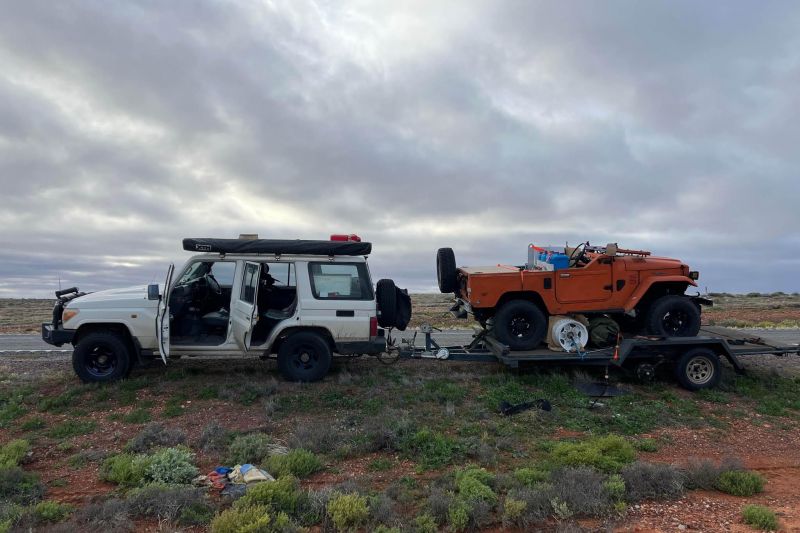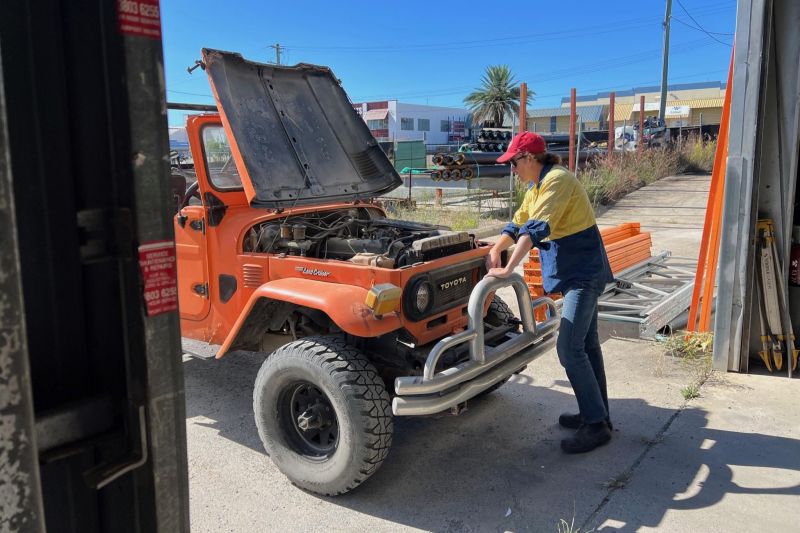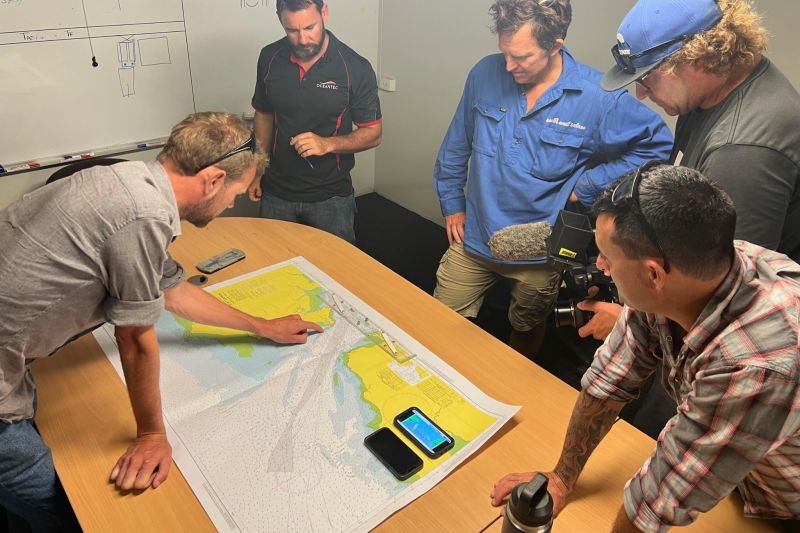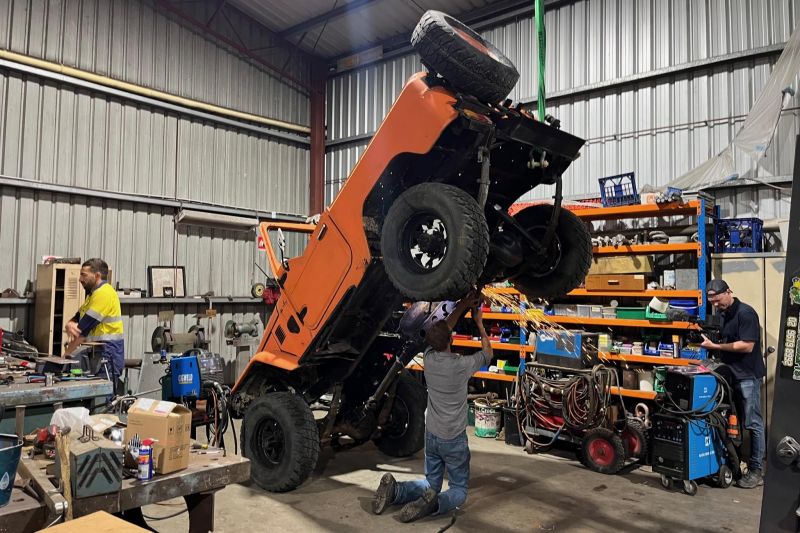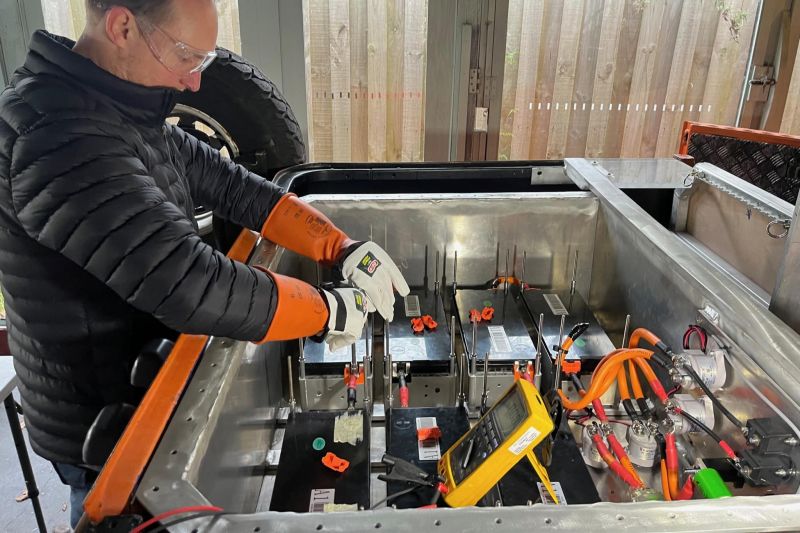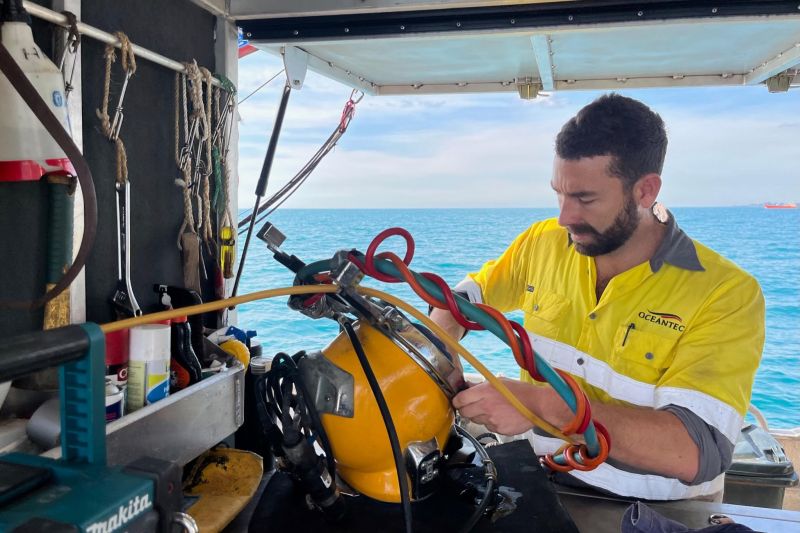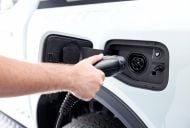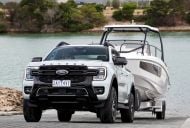Tom Lawrence, Luke Purdy and Taylor Smith are responsible for the 1978 Toyota FJ LandCruiser that broke the world record for the longest and deepest underwater drive in Darwin, Australia.
CarExpert had an exclusive chat with video producer Tom Lawrence to understand the project a little further. The team successfully crossed the Darwin Harbour on the 29th of July, 2023.
“The harvest floor was a lot muddier than we had expected, when you’re underwater, you get these big huge areas of just soft mud where the car would just start sinking straight away, down past the axles,” Mr Lawrence told CarExpert.
“We did a lot of research trying to understand what the seafloor was like… because Darwin harbour has got a huge seven meter tide… that floor is constantly changing.”
“There was quite a few months between when we first surveyed and when we actually did the crossing. I think that the actual mud was far softer and more difficult to navigate than we had anticipated.”
“We were up until one o’clock in the morning bolting bits on, getting it ready to go the night before it did the crossing,” Mr Lawrence told CarExpert.
“It was still maybe 10-15 per cent away from where we really wanted it to be.”
Mr Lawrence told CarExpert that as well as the ocean floor, the team considered the risks of using an electric motor submerged in water, local marine wildlife, and the safety of the 30 divers involved.
During the drive, the LandCruiser nicknamed “Mudcrab”, reached depths of up to 30 metres underwater which meant the divers couldn’t spend more than 15 minutes in the car at a time before resurfacing due to underwater pressure.
CarExpert asked Mr Lawrence what the team would do differently if they were to do it again, of which he replied “We would want real proper beadlockers designed to be able to hold water inside the rims.”
“We just ran out of time and money to cut our rims up and get them to work.”
For those who remember, back in 1983 a similar attempt to drive a LandCruiser underwater failed after four kilometres when the 4×4 hit a rock which caused it to resurface and abort mission.
How it all started came from a rather ambitious request from Mr Lawrence to Mr Purdy and Mr Smith which at first declined to part take.
“I pitched that idea to them at first and they were like, no way. It’s too crazy,” Mr Lawrence told CarExpert.
“But within a couple of weeks, they both called me back like actually, yeah, that’d be really cool.”
“Luke, he grew up learning to drive on a 55 series [LandCruiser]… so there was a real emotional thing for him.”
“Luke’s actually ship ride by trade. And he’s been a sort of ship builder and fixer and had his own marine salvage business for years.”
“And for Taylor, he’s been really successful in the mining industry… he started that business just with a single flatbed and a [Land]cruiser and built his way up from there. So he had sort of built his entire empire [with a LandCrusier].
A video showing the built process, elaborates on further constraints the team faced when building the vehicle to be able to withstand the bottom of the sea floor.
The team had to find a way to waterproof the vehicle’s engine bay.
The FJ LandCruiser was fitted with a new electric motor that was housed in a submarine-like casing to prevent any water getting into the vehicle’s motor and electrical system.
Over a six month period including “overlapping mechanical fabrication and electrical” the team put together the vehicle.
“We pretty much built everything from scratch, so much of it’s really customised…nothing’s built the way like was built because of the underwater proofing and the lead conversion and all that stuff. It’s pretty bespoke,” Mr Lawrence told CarExpert.
The team installed a NetGain Hyper9 HV motor which produces 90kW of power and 162 ft lbs (219Nm of torque). It’s mated to a 32kWh battery pack.
According to Mr Lawrence after its record-winning achievement, the electric FJ LandCruiser will continue to undergo its restoration process.
“The plan at the moment is we want to keep developing content for online. We want to focus on refurbishing the vehicle, these 40 Series [LandCrusier] are becoming rarer and rarer,” Mr Lawrence told CarExpert.
“It’s fully functional, like it’s not like a race car that finishes a race and falls apart. It’s got enough battery and power and we’ve made it strong enough, it could probably turn around and drive back where it come from.”
Photo sourced by Tom Lawrence and David Hancock Photography

